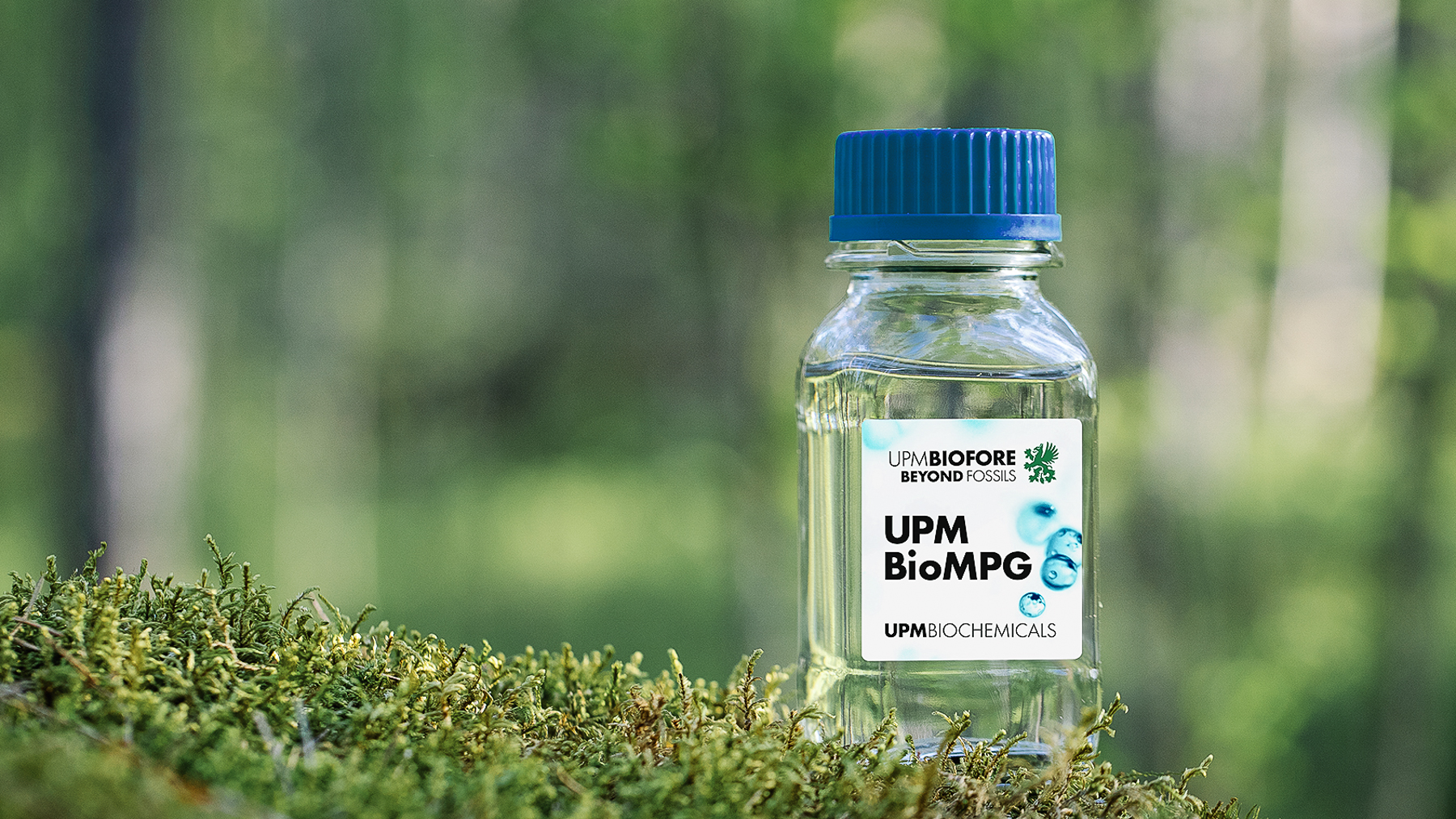The advantage of wood-based biochemicals is that they are better for the environment. Wood is a recyclable and renewable resource that can store carbon in the material. It will play a key role in moving the world into a carbon-neutral circular economy.
Additionally, wood-based biochemicals can shorten supply chains and boost a regional economy. Fossil fuels might be shipped halfway around the world, but wood can be produced and used locally, helping those who live and work nearby and reducing both the financial and environmental costs of transportation.
“The Leuna plant will use hardwood trees which are native to Germany,” Duetsch says. “It is good that we have more industrial applications for native hardwoods instead of using non-local softwoods. These natural hardwood forests will be more climate-stable and can help biodiversity.”

An easy replacement
The Leuna plant will convert wood into the next generation of biochemicals. Renewable glycols will go into bottles, packaging, textiles, cosmetics and detergents. Lignin will be used in adhesives and bioplastics. Wood-based functional fillers will go into rubber tyres and thermoplastics. These biochemicals have a huge number of potential industrial and consumer applications.
Lignin is here to stay
“It is important that our customers don’t need to make changes to their existing value chains, such as their production and recycling,” Konttinen continues. “There is no burden to switch from fossil- based materials to wood-based materials. The new biochemicals fit in their existing processes, but with sustainability built in.”
Sustainability is the main draw for these new biochemicals. They will initially be a premium product, but a good example of the potential in their future growth might be renewable energy. Not too long ago, solar and wind power were chosen only for their environmental credentials, but today they are often cheaper than energy produced from coal or oil. Could wood-based biochemicals become more cost-efficient than their oil-based alternatives?
“It’s possible. Costs should come down in the future,” Konttinen says. “We are constantly optimising our systems and developing different technologies which will make these materials more economical.”
A new era for UPM
This new era of biochemicals is also a new era for UPM. The customers who want biochemicals are not the same customers who want paper or timber. This requires much more than simply building a new plant.
“We are not just building a new factory,” explains Konttinen. “We are building a new organisation, new business processes, new systems and competences, all to serve these new customers better.”
Molecular bioproducts are one of UPM’s three spearheads for growth. They have already led to a profitable biofuel business and are now forming the new biochemicals business. The other two spearheads are speciality packaging materials and high-value fibre products. Together, the three provide the potential for sustainable growth long into the future.
“This is a challenge, because this is new to us and new to the world. No one has done this before and there is no playbook,” Konttinen says. “We have to develop all these new technologies and systems.”
Yet this is no longer a daydream. Work on the Leuna plant has started and the new era of biochemicals has begun.
“The plant is expected to start up by the end of 2022,” Duetsch says. “During 2023 you could be holding a bottle which came from our biochemicals and we are starting to help to improve sustainability in many other different products as well.”
Read more about our biochemicals project in Germany


